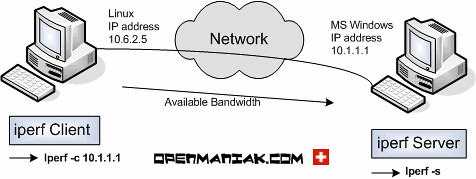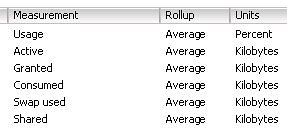I am in the process of planning for a large infrastructure upgrade from ESX3.5 to vSphere 4. As part of the planning I've been looking at Virtual Machine Virtual Hardware Versions. Currently all VM's are running Version 4, but as we migrate to ESX4 we will have the option to upgrade to Version 7.
Instead of just upgrading all VM's no questions asked, I decided to try and answer these following questions;
- Exactly what does Version 7 offer?
- What is the upgrade process?
- Will upgrading introduce any downtime?
- Could there be any issues after the upgrade which may cause the VM to not function correctly?
Here is what I've found
Read the rest of this entry »
 On the 25th January 2010, 3PAR announced the release of the 3PAR Management Plug-In for VMware vSphere.
On the 25th January 2010, 3PAR announced the release of the 3PAR Management Plug-In for VMware vSphere.
Working at a 3PAR Cloud-Agile Partner I have free access to this application, so I have downloaded, installed and given it a whirl. (Note. The vCenter plugin and Recovery Manager for VMware are supported only on version 2.3.1 of InServ.)
Here is the official overview of what the plugin does;
Read the rest of this entry »
Have you ever been looking into an issue in vCenter only to find that the time the issue happened has just dropped off of the bottom of the Tasks or Events lists? Well that's happened to me a few times.
I've just come across something in the VMware Infrastructure Client which I didn't know existed.. and I've been using the VIC for what like seems forever.
Read the rest of this entry »
I've been asked to take a look into the Hot-Add Memory and CPU features which are available with vSphere 4. The concept seems pretty useful and straight forward, but what isn't is the list of Operating Systems that support these features. There doesn't seem to be a definitive list. Either that, or I should have gone to Specsavers?
I've had a look around and I can find two KB articles from VMware: Here, and Here which talk about using Hot-Add on Linux OS's. Another VMware document focused on Microsoft: VMware Guest/Host OS Compatibility Guide There is Jason Boche's great article which he researched and tested himself, And Daniel Eason's summary on Hot-Add.
From these different articles I have taken all of the information and produced the following table which in theory should be all of the OS's which support VMware Hot-Add Memory/CPU.
Read the rest of this entry »
Yesterday, QLogic announced that its 2nd Generation, Single Chip, 8100 Series 10Gb Converged Network Adapters are now certified by VMware for ESX/ESXi 4.0. This is key because a number of end users have been waiting for VMware to announce certification for 2nd Generation CNAs since QLogic announced the industry’s first 2nd Gen CNAs in March 2009 with support for only Windows/Linux. EMC, IBM, and NetApp are already supporting the 8100 Series CNAs today. The combination of QLogic second generation CNAs with VMware vSphere 4 enables customers to attain a higher degree of data center efficiency — an Intelligent Converged Data Center.
The 8100 Series 2nd Gen CNAs are the first 2nd Gen CNAs to be listed on the vSphere 4 HCL. This is key because the 2nd Gen CNAs (in comparison to currently shipping 1st Gen CNAs in the market) offer:
- 150% higher FCoE performance
- 1/3 the power consumption
- Standard PCI Express form factor which enables the adapter to be deployed in any leading rack/tower servers with PCIe x8 or larger slot. Current Gen 1 CNAs are compatible only with a limited set of server models due to its large size.
- Compatible with the latest released standards for FCoE
Below is the URL with more details on the new certification.
http://ir.qlogic.com/phoenix.zhtml?c=85695&p=RssLanding&cat=news&id=1358476
 Have you ever wanted to check your Network throughput between your ESX Hosts? or even between VM’s? Well I needed to do this, and I couldn’t find any straight forward how-to’s.
Have you ever wanted to check your Network throughput between your ESX Hosts? or even between VM’s? Well I needed to do this, and I couldn’t find any straight forward how-to’s.
Having been pointed in the direction of a simple application called IPerf by Simon Gallagher I opted to use the Windows version. I’m not great with Linux, and as this is an open source application, documentation is a little hard to come by. So for me, this post is also to remind me how on IPerf works should i need to use it again.
Read the rest of this entry »
 After doing a range of Memory testing and analysis on a group of Vmware Virtual Machines, the subject of the “Unlimited” Memory/CPU tick box was brought up.
After doing a range of Memory testing and analysis on a group of Vmware Virtual Machines, the subject of the “Unlimited” Memory/CPU tick box was brought up.
When Resource Allocation’s are setup on a VM there is the option of selecting an Unlimited Limit. It seems as though some people misunderstand exactly what that tick box means.
So i will do my best to try and explain exactly “Unlimited” means.
Read the rest of this entry »

Have you ever gazed longingly into the eyes of vCenter 4 Performance Charts and thought to yourself “What the hell does that Counter mean??”.
Since the version 4 upgrade, vCenter now has an even larger amount of Performance Counters for you to use at your disposal. But what do they all mean?
Read the rest of this entry »
I’ve had numerous emails about this question which can be found in my VCP410 Practice Exam. So I think it’s time to sort this out once and for all.
Read the rest of this entry »
A couple of months ago i spoke about the possiblity of using VMotion over a WAN connection. Well yesterday at VMWorld, VMware announced that long distance VMotion was now supported for up to 200 Kilometers.
Read the rest of this entry »
 On the 25th January 2010,
On the 25th January 2010, 

